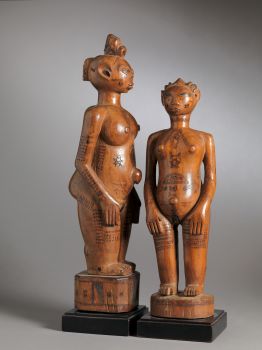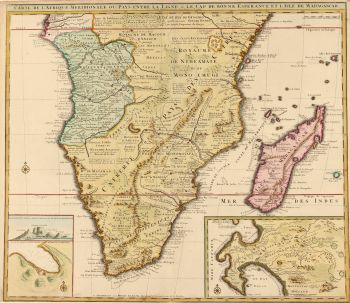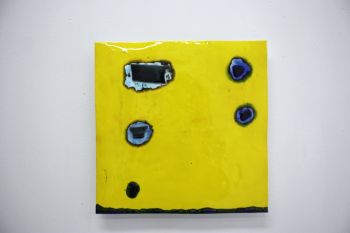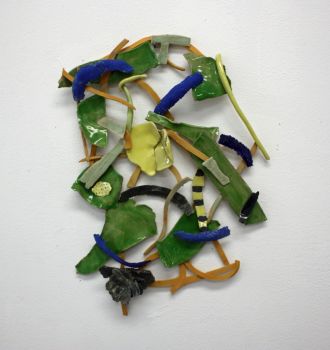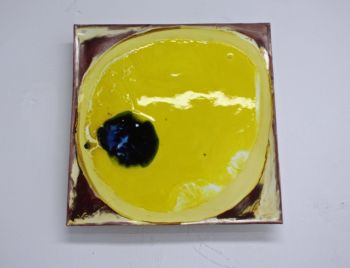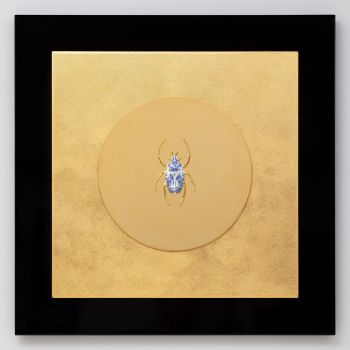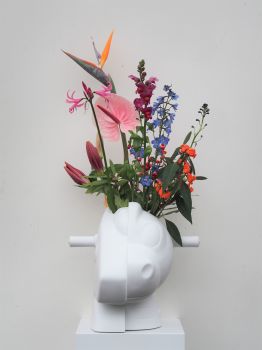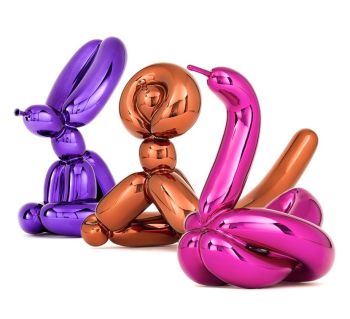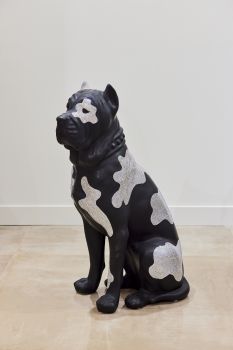Japanese porcelain blue and white ‘Van Frytom’ tea bowls and saucer dishes, Edo period, c. 1690-1710 1690 - 1710
Artista Desconocido
Porcelana japonesaPorcelana
3.40 cm, ø 13 cm
ConditionVery good
Precio a consultar
Menken Works of Art
- Sobre la obra de arteA set of seven ‘Van Frytom’ tea bowls and saucer dishes.
Japan, Arita, Edo period, c. 1690-1710.
The rare set consisting of three tea bowls and four saucer dishes with matching decorations in underglaze blue in the style of Dutch Delft painter Frederik van Frytom.
The bowls with spreading sides and everted rim, decorated in underglaze blue, on the outer body with a Frysian “kop-staart-rompboerderij” (translation: Head-Neck-Body farmhouse) and two figures standing next to each other in a landscape, the inner and outer rim with washed-blue bands. The well on the inside decorated with a figure standing in the grass with trees and a house. A typical stylized four-character Chenghua mark to the base.
The dishes in the form of a flower with foliated rim. Decorated in underglaze blue, similar to the bowls, with a Frysian “kop-staart-rompboerderij” and two figures standing next to each other in a landscape with grass, trees and clouds in the sky. The inner rim with a washed-blue band, the base with spur marks and a six-character Chenghua mark.
Ref:
A.Vecht, Frederik van Frytom 1632-1702, Life and work of a Delft pottery decorator, No. 40-44.
A pair of ‘Van Frytom’ style tea bowls are in the Metropolitan Museum of Art collection, accession number 2002.447.118 and accession number 2002.447.119. These are also illustrated in Japanese Art from the Gerry Collection in the Metropolitan Museum of Art, p. 116, pl. 95a,b.
For another tea bowl with this design, see: The Burghley Porcelains, An Exhibition from The Burghley House Collection, pp. 158-159, pl. 54.
A similar saucer dish is in the collection of The Burghley House, reference: CER0473
For a tea bowl and saucer dish of the same style but with a river scene, see the Twickel Castle collection, Delden, no. JK 13, illustrated in: Fine and Curious (Christiaan J.A. Jörg) pp. 244-246, pl. 317-317a.
Two similar dishes were also sold at Christie’s, 19 Dec 2014, lot 85.
Dimensions:
Bowls: Diameter 7.4 cm, height 3.4 cm.
Saucer dishes: Diameter 13 cm, height 2.5 cm.
Condition:
Very good condition, without damages.
Worldwide registered and insured shipping.
Take a look at our other listings for more Asian art and antiques.
Inv. No: MW107 - Sobre el artista
Puede suceder que un artista o creador sea desconocido.
Algunas obras no deben determinarse por quién está hecho o por (un grupo de) artesanos. Algunos ejemplos son estatuas de la Antigüedad, muebles, espejos o firmas que no son claras o legibles, pero también algunas obras no están firmadas en absoluto.
También puedes encontrar la siguiente descripción:
•"Atribuido a …." En su opinión, probablemente una obra del artista, al menos en parte.
•“Estudio de….” o “Taller de” En su opinión, una obra ejecutada en el estudio o taller del artista, posiblemente bajo su supervisión
•“Círculo de…” En su opinión, una obra del período del artista que muestra su influencia, estrechamente asociado con el artista pero no necesariamente su alumno.
•"Estilo de …." o “Seguidor de…”. En su opinión, una obra ejecutada al estilo del artista pero no necesariamente por un alumno; puede ser contemporáneo o casi contemporáneo
•"Manera de …." En su opinión una obra al estilo del artista pero de fecha posterior
•"Después …." En su opinión, una copia (de cualquier fecha) de una obra del artista
•“Firmado…”, “Fechado…” o “Inscrito” En su opinión, la obra ha sido firmada/fechada/inscrita por el artista. La adición de un signo de interrogación indica un elemento de duda.
•“Con firma…”, “Con fecha…”, “Con inscripción…” o “Lleva firma/fecha/inscripción” en su opinión la firma/fecha/inscripción ha sido añadida por alguien que no es el artista
¿Está interesado en comprar esta obra de arte?
Artwork details
Related artworks
Artista Desconocido
Couple Wooden Ancestors Sculptures with Scarifications, Zela People, DRC. 1920 - 1930
Precio a consultarSpectandum Gallery
Artista Desconocido
A white jade ‘Lotus Seedpod and Bug’ carving, Qing dynasty, 18th century18th century
Precio a consultarMenken Works of Art
1 - 4 / 12Artista Desconocido
UN PEQUEÑO NETSUKE DE MARFIL DE UN HOLANDÉS CON UN TAMBOR1750 - 1800
Precio a consultarZebregs & Röell - Fine Art - Antiques
Artista Desconocido
UN NETSUKE DE MARFIL DE UN HOLANDÉS CON UNA COCKEREL18th century
Precio a consultarZebregs & Röell - Fine Art - Antiques
Artista Desconocido
UN NETSUKE MARINE MARFIL DE UN HOLANDÉS CON UN VENTILADOR CHINO18th century
Precio a consultarZebregs & Röell - Fine Art - Antiques
Artista Desconocido
The Stamford Raffles Secretaires.1800 - 1813
Precio a consultarZebregs & Röell - Fine Art - Antiques
Artista Desconocido
A rare Japanese export lacquer medical instrument box1650 - 1700
Precio a consultarZebregs & Röell - Fine Art - Antiques
Artista Desconocido
UN RARO TELESCOPIO DE CUERO LACADO JAPONÉS GRANDE1750 - 1800
Precio a consultarZebregs & Röell - Fine Art - Antiques
1 - 4 / 21- 1 - 4 / 24
Samuel Dejong
Anatomia Blue heritage II Goliath Beetle closed BGG2019
Precio a consultarVilla del Arte Galleries
Samuel Dejong
Anatomia Blue Heritage, Atlas Closed2017 - 2019
Precio a consultarVilla del Arte Galleries
Artista Desconocido
Series of 6 Chinese cups and saucers (Yongzheng period)1722 - 1735
Precio a consultarKuipers Kunst & Antiek
Artista Desconocido
A large Japanese Imari porcelain 'VOC Groningen' dish1800 - 1925
Precio a consultarZebregs & Röell - Fine Art - Antiques
1 - 4 / 24Artista Desconocido
Chinese carnelian agate vase or brush washer, 18th/19th century, Qing dynasty1720 - 1820
Precio a consultarMenken Works of Art
Artista Desconocido
A white jade ‘Lotus Seedpod and Bug’ carving, Qing dynasty, 18th century18th century
Precio a consultarMenken Works of Art
Artista Desconocido
Chinese gilt bronze censer, Xuande mark, 18th century, Qing dynasty18th century
Precio a consultarMenken Works of Art
1 - 4 / 9














